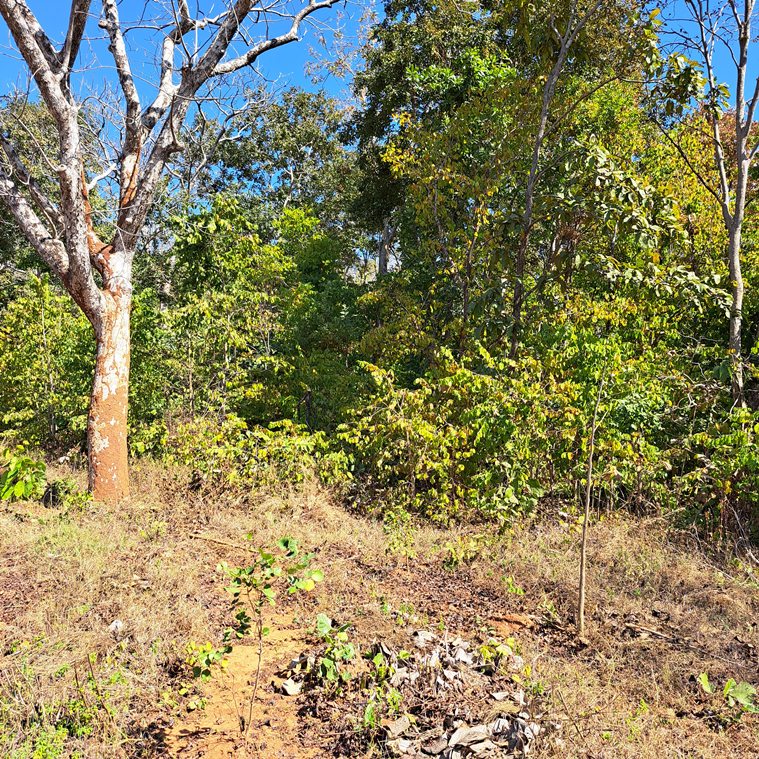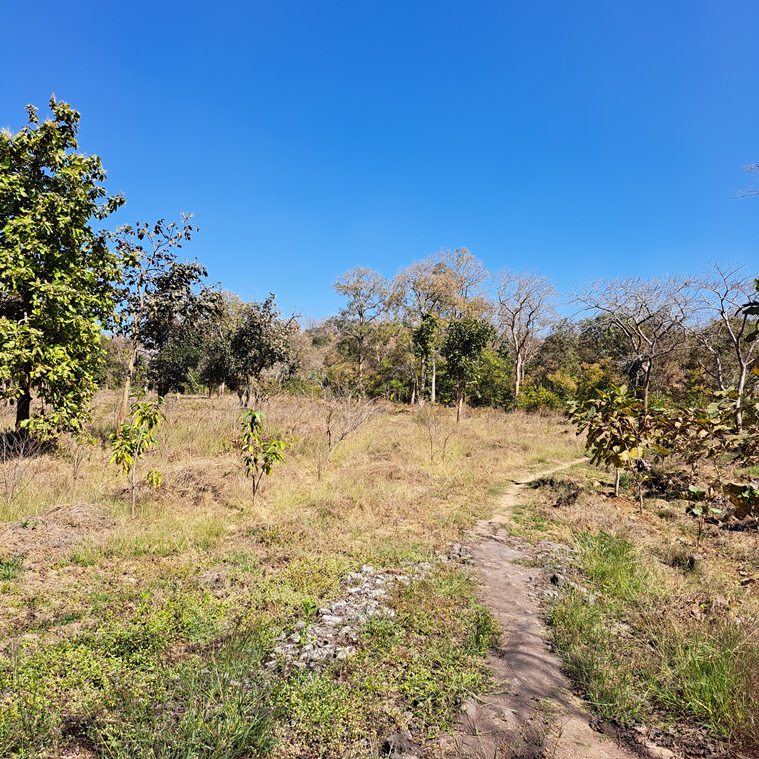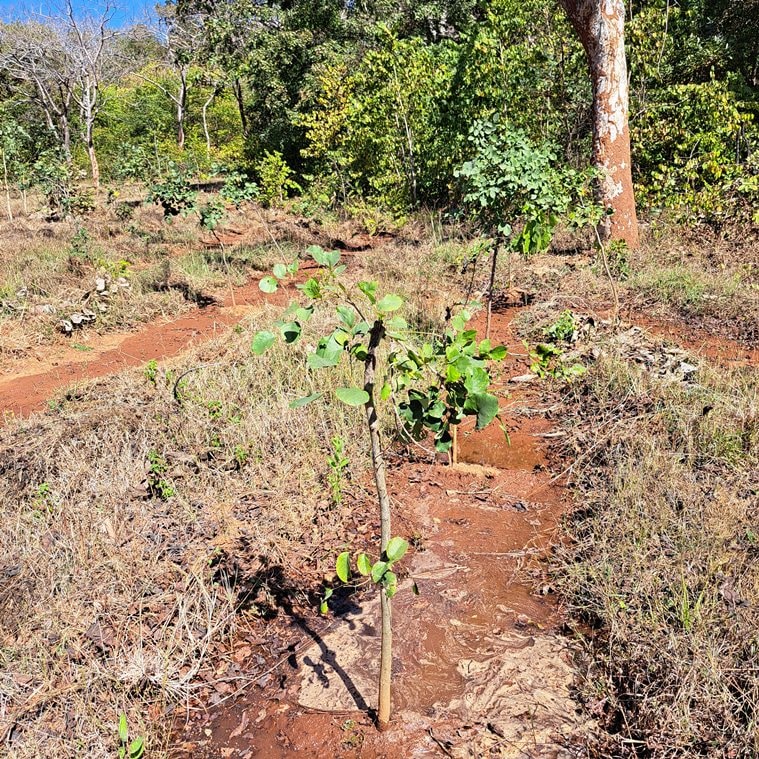An Express Investigation – Part Four | Compensatory afforestation neither compensates nor forests: 60% funds unused
Wrong to assume this will replace forests, say officials, but quality of land given adds to the challenge.
 The compensatory afforestation programme is a unique legal requirement that seeks to offset the loss of forests due to infrastructural and industrial projects.
The compensatory afforestation programme is a unique legal requirement that seeks to offset the loss of forests due to infrastructural and industrial projects. Barren and rocky land where new saplings are precariously surviving; plantatsions split over multiple disjointed locations; funds worth thousands of crores meant for expanding forest cover lying unutilised in state coffers — India’s showpiece compensatory afforestation programme is struggling to compensate for forests being cleared for development.
In the process, an investigation by The Indian Express in association with the International Consortium of Investigative Journalists (ICIJ) reveals, good quality dense forest land is often lost while new plantations are sought to be grown on land where little had ever grown before.
 A good quality forest area in Dhamtari district of Chhattisgarh which is being cleared for the construction of a highway.
A good quality forest area in Dhamtari district of Chhattisgarh which is being cleared for the construction of a highway.
The compensatory afforestation programme is a unique legal requirement that seeks to offset the loss of forests due to infrastructural and industrial projects. It is also a crucial tool towards achieving India’s commitment to create an additional carbon sink of 2.5-3 billion tonnes of carbon dioxide equivalent by the year 2030.
Several other programmes, such as the Green India Mission, Namami Gange and MGNREGA, also support afforestation and contribute towards this effort. But compensatory afforestation is the most ambitious and the most resource rich, financially.
Under the Compensatory Afforestation Fund (CAF) Act, 2016, project developers, government or private, are obliged to pay a compensation amount, and various other fees, if the project involves diversion of forest land.
This money can be used only for afforestation, or related, purposes. Since 2016, when the law was enacted, more than Rs 66,000 crore has been collected in a national fund.
Official records show that about Rs 55,000 crore has already been transferred to the state governments in the last five years, to be utilised for plantations which can grow to become forests after a few years. However, only Rs 22,466 crore, just about 40 per cent of this amount, had been allocated for afforestation works. The rest of the money is sitting idle in state government accounts, officials said. What is more, money is not often released at the right time. Plantations have a seasonality, officials said.
 A plantation site in Bhilaigarh, Chhatisgarh.
A plantation site in Bhilaigarh, Chhatisgarh.
Government officials say money for afforestation can be utilized only in phases, and it is not a one-time expenditure. Records also show that afforestation activities had been started on at least 90 per cent of the lands identified for this purpose since the compensatory afforestation programme began — on 10.29 lakh hectares of land in total against the diversion of 11.38 lakh hectares of forest land for non-forest purposes.
But then, money is only one part of the problem.
The Indian Express visited five illustrative compensatory afforestation sites in Chhattisgarh and Odisha, two of the most heavily forested states, to find that the plantations hardly resembled the forests being cleared.
A major part of the reason is that new plantations take several years to develop into a forest, and most of the compensatory afforestation is still relatively new. But the key challenge is the mainly the quality of land over which plantations are being grown.
For example, in Dhamtari district, about 70 km south of Chhattisgarh capital Raipur, forests are being cleared for the construction of 124 km of new highway that will link to Visakhapatnam, a critical port for the export of the state’s vast mineral resources.
Records show that more than 87,000 trees spread over 228 hectares of lush green, dense forests are being cleared for this 45-metre wide road being constructed under the flagship Bharatmala highway project. They also show that 457 hectares of land has been allocated for compensatory afforestation, double the area of diverted forest, over which more than 5.02 lakh saplings are being planted. But here’s the catch: unlike the diverted forest, land for compensatory afforestation is not contiguous but spread over 19 locations.
About 150 km east from Raipur, in Bhilaigarh, there is another set of slightly older plantations being grown to compensate for forest land taken away for a railway project. The qualitative difference between the forest lands being diverted, and the land used for compensatory afforestation couldn’t be starker.
 A plantation site in Bhilaigarh, Chhattisgarh.
A plantation site in Bhilaigarh, Chhattisgarh.
The Indian Express visited three sites here, all of them extremely rocky patches on hills, where nothing was growing earlier. At the oldest of these sites, where saplings were planted three years ago, a fair amount of growth could be seen. But the two other locations showed little prospect of letting anything like a forest grow on them.
Allocation of such barren, rocky land for afforestation is not an aberration.
“We mostly get only degraded, barren lands for compensatory afforestation. The plantation sites are often also high biotic pressure areas, meaning nearby human habitations or cattle use it for their own purposes. Plantations on these sites would obviously find it difficult to compete with natural forests. But still, there are several cases of successful plantations,” said Srinivas Rao, Additional Principal Chief Conservator of Forests overseeing compensatory afforestation in Chhattisgarh.
It’s a similar story in several of these compensatory afforestation sites, like the two The Indian Express visited in Kalahandi district of Odisha, about 20 km outside Bhawanipatna town. “There are sites here where the plantations have all died. It’s all barren now,” said Dasrathi, who works for forest and tribal rights through a local NGO in Bhawanipatna.
A retired forest official, who had been instrumental in drawing up the compensatory afforestation programme but did not wish to be named, said it would be wrong to think that new plantations could “compensate” for the loss of forests that get diverted.
“Compensatory afforestation is compensatory only in name… because it is being done in lieu of forest land being diverted. It is not a bad idea, in fact quite a useful one, and is one-of-its-kind programme anywhere in the world. But to expect that plantations can truly compensate for good quality forests is unrealistic. Natural grown forests are not just about trees, it is the entire ecosystem… biodiversity, wildlife, water bodies. Loss of these cannot be compensated by plantation exercises, at least not within a few years. But compensatory afforestation is not a useless exercise. It is quite valuable. The important thing is not to compare the two, and raise expectations of creating new forests that would be just like a natural one. We will be greatly disappointed in that case,” the ex-official said.
But others, including activists, argue that compensatory afforestation was creating newer problems as well. “There are instances where the forest department has done compensatory afforestation on lands that belonged to tribals and forest-dwellers. This has happened despite guidelines that compensatory afforestation has to be aligned with the Forest Rights Act which grants tribals and other forest-dwellers legal ownership rights over the land they live and use for livelihood purposes,” said Tushar Dash, an independent researcher who works on forestry related issues, including compensatory afforestation.
- 01
- 02
- 03
- 04
- 05






























